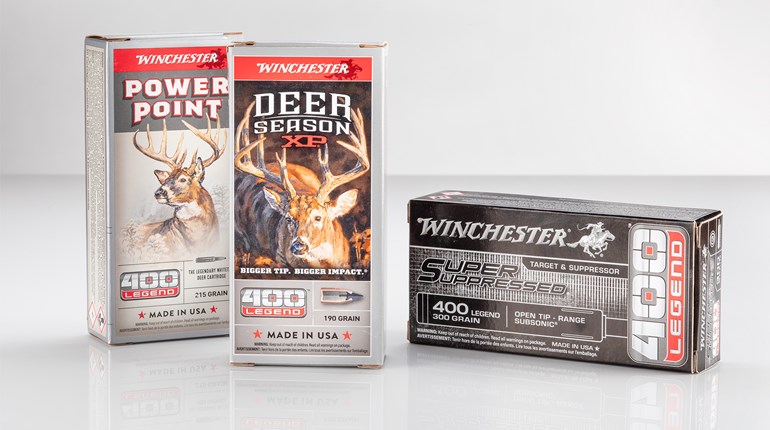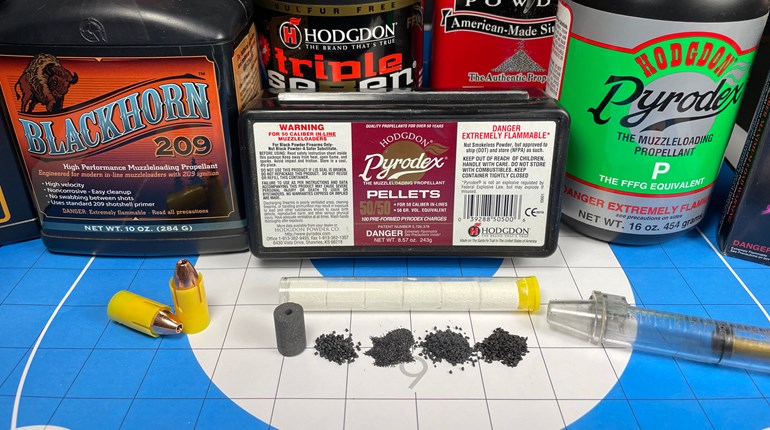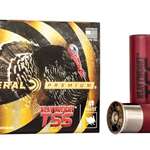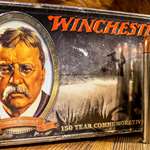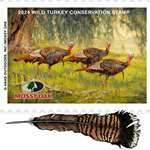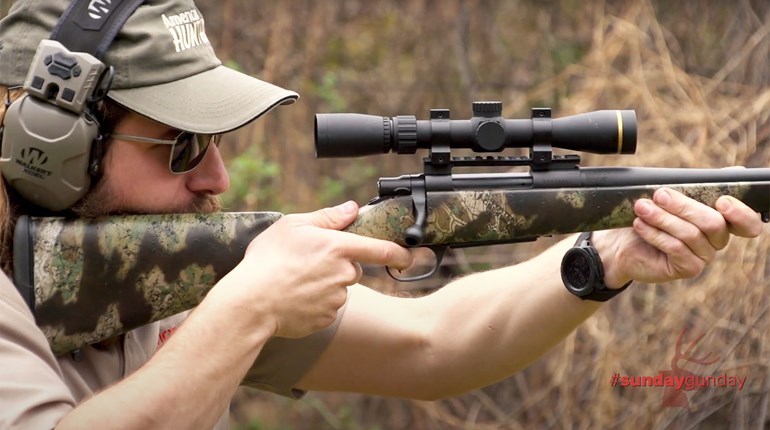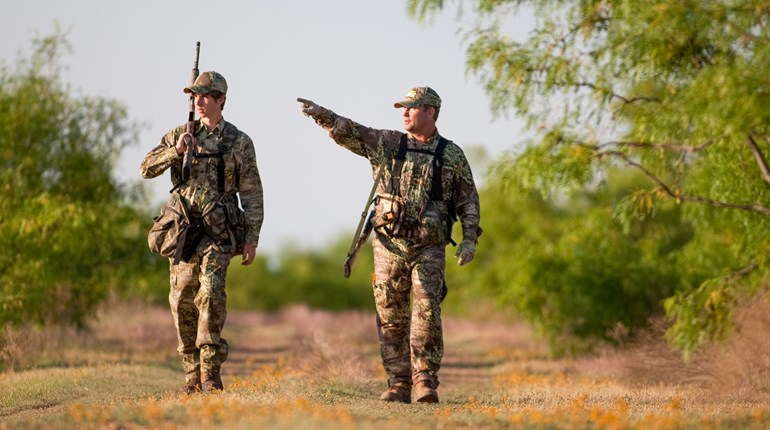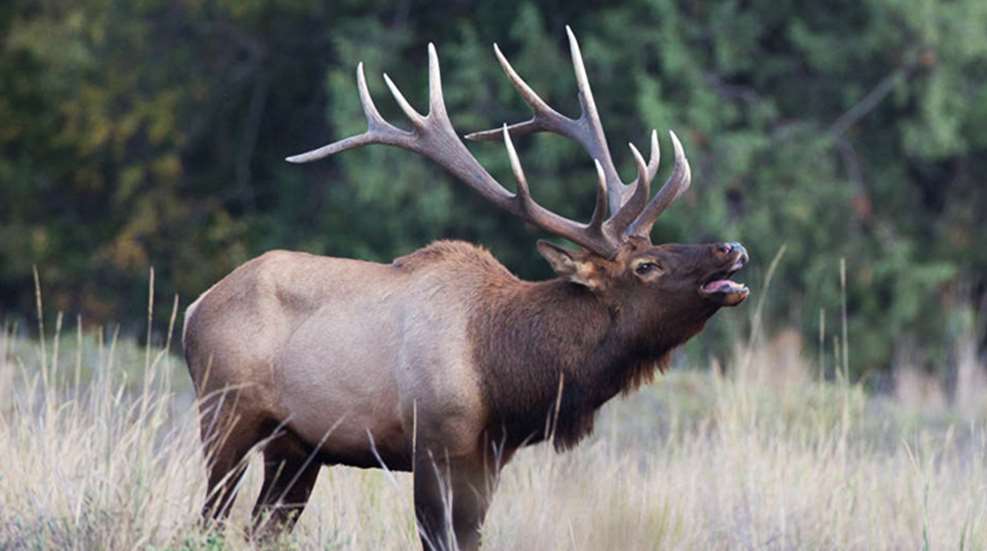
Four bull elk trailed across the west Texas canyon bottom, tiny puffs of dust rising from each step. The morning was late, and though we’d seen several elk, these were the first big bulls. One in particular—a main-frame seven-by-seven—had our attention. I watched the bulls drop into a mesquite-choked draw, checked my watch and turned to the fellow I was guiding; a bowhunter named Chris.
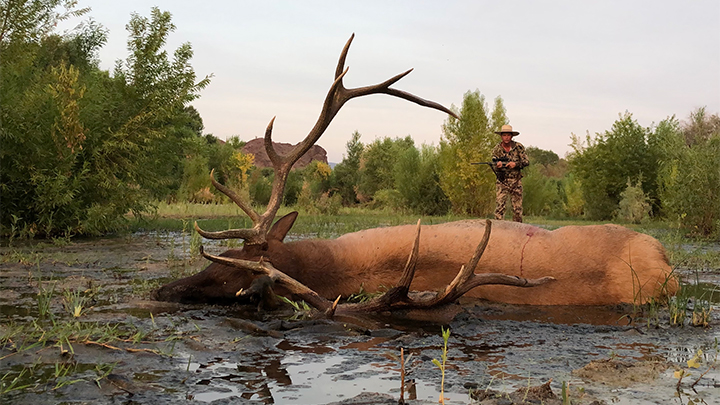
“These bulls are looking for a place to bed up for the day,” I whispered, “and will likely stop right there in the arroyo. They’re satellite bulls to that herd we shadowed this morning. I think we’ll let them settle down an hour or so and then slip in and try to call them in.”
Noonday found us creeping into the brushy arroyo downwind of where I figured the bulls had bedded. I set Chris up on top of the cut-bank where he could cover the draw and both banks. Forty yards upstream I set up in the bottom of the wash and let out an inquiring cow mew. The response was immediate and electric; a full-throated bugle from just up the arroyo.
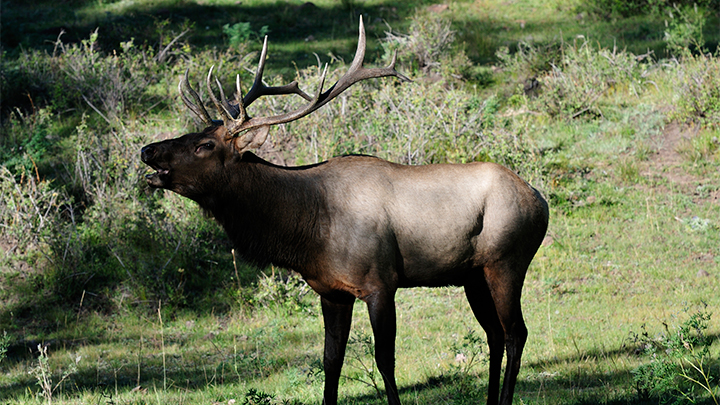
The ranch we were hunting was all low-fence, free-range territory. It’s private property, though; over 600 square miles of contiguous land. The elk there don’t receive a ton of hunting pressure. Undisturbed, uneducated elk are typically very easy to call in, as evidenced by the 24 bulls I’d called to within 25 yards of my hunter over the prior three days. This bull was fixing to become number 25.
I answered the bull with another cow call, adding a little excitement to the tone. The bull bugled back immediately, closer this time. There was no doubt things were going to get western in a hurry. Then he bugled a third time and I saw him coming at a fast walk, right up the bottom of the arroyo. I raised my binocular, identified him as the big seven-by-seven, and watched as Chris’ arrow blew right through the bull and stuck into the dirt bank opposite. His shot was exactly seventeen yards, and the bull piled up in short order.
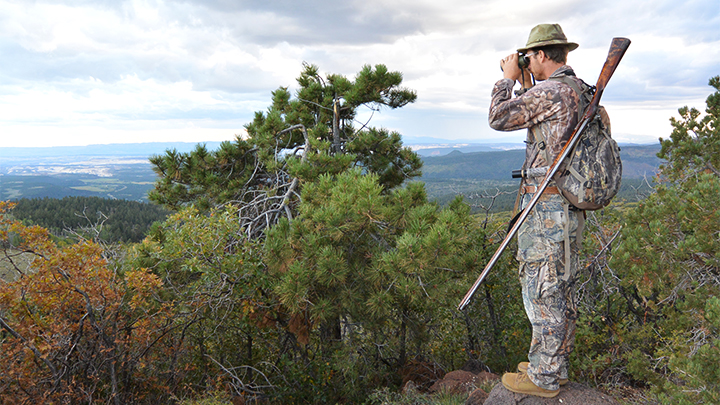
Strategy
Rarely is there a perfect strategy for calling a bull up close, but the tips below usually hold true. Give them a try next time you’re in the elk woods.
• Don’t Sound Fake: Unlike those unpressured private land elk I talked about earlier, public-land wapiti—the kind most of us get to hunt—are hard to call. The main reason, in my opinion, is that they are bombarded every fall by fake bugles, cow mews, calf chirps and every other call known to mankind. Most hunters love blowing on an elk call and do so at every opportunity. Worse yet, many well-meaning hikers, fishermen and nature-lovers carry elk calls, and toot away every time they see elk. The consequence is educated elk that are very good at detecting fake elk sounds.
• Do Sound Like an Elk: As a result, your strategy as a hunter is simple; you must sound like an elk, not just blow on an elk call. Elk are naturally gregarious, noisy animals, and if they hear an unfamiliar bugle or cow call accompanied by eerie silence, they will be suspicious. You need to snap twigs, knock a stick against a tree trunk, stir around in some leaves, and splash in water. Anything you can do to emulate natural elk sounds will help. I have accidentally called bulls in simply by riding my horses through rocks. The noisy sound of clattering hooves had a bull bugling and following me all over the mountainside.
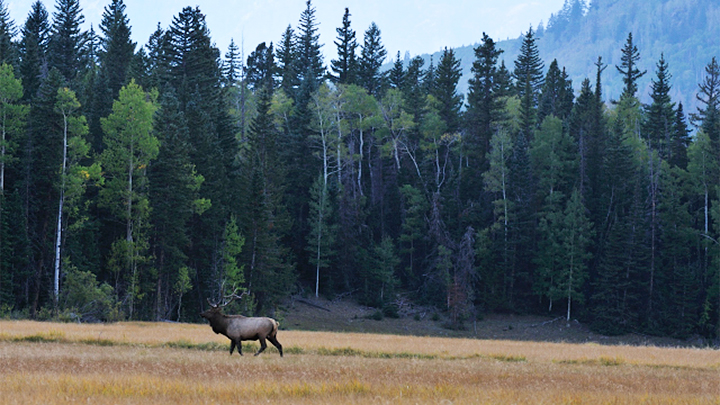
• Run and Gun: One of most strategic uses of your elk call is to locate elk. If you’re struggling to find animals (most of us are), try a technique called “Running and gunning.” Start by climbing to a point of vantage. A ridge, rocky point or rise will work; anything that elevates you so that your call sounds will carry. Now, blow a simple bugle. (Don’t grunt or chuckle—those sounds are very hard to replicate authentically, and will give you away to a savvy bull or cow.) Listen intently for about a minute. If you don’t hear anything, blow an inquiring cow mew. Listen intently. If still no answer, blow one or two more cow calls, adding a lonely, almost desperate tone. Sit quietly listening for another 10 to 30 minutes. If you haven’t raised a response, move half a mile or more to another vantage and repeat. Eventually, you will get a response.
Sequence
Here again, there is no perfect one-size-fits-all calling sequence. The single best tip I can give you is to listen to the elk when you initiate a conversation.
• Become Acquainted: The first time a bull responds to your calls, DO NOT immediately answer him back. He and his cows (if he has them) will be focused on your sounds now, and will smell a rat if you respond too eagerly. Just wait and listen. If you don’t hear any more, move a bit closer. If the bull bugles a second time—especially if he has come closer or has an excited or inquiring tone—now is the time to answer him. He’s interested, and wants to know who and where you are. When you answer, use a cow call. From here on out, follow his lead. If he gets excited, you sound excited. But if he is cautious, call sparingly. Don’t hurry him; maybe he’s taking a nap, or maybe just wants to know you’re a real elk before he comes to check you out. A few hours of desultory conversation (one or two calls per hour) can go a long way toward convincing a bull that you’re actually an elk, especially if you add a twig snap or similar sound every now and then. Stay alert, because if he does decide to come things can happen very fast.
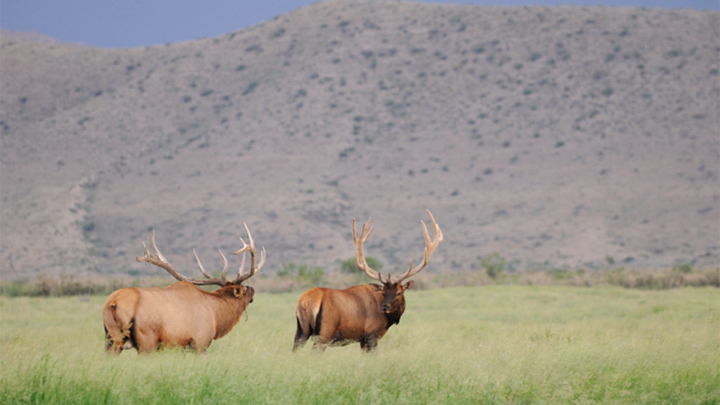
• Use Estrous Sounds: If you’re fortunate enough to hunt during the rut, one of the best sounds with which to bring a bull in close is an estrous cow call. This is a long, sometimes quavering mew, with a whiny, almost plaintiff tone. Once a cow hears a bull answering her calls, she adds excitement to her sounds, so you should do the same. If the bull is answering you immediately, and bugling hard and repeatedly, pour on the estrous calls. Keep a running conversation with the bull as he works his way toward you.
• Call a Herd Bull: Often, a herd bull—the biggest, toughest bull around—will be the one aggressively answering your estrous sounds, but he won’t come any closer, no matter how well you play him. Usually, this is because he is not willing to leave his harem, and he’ll try to convince you (the sexy-sounding cow) to come to him. When this happens, reduce or stop your calling. You don’t want to make the cows get nervous and leave, with your bull in tow. Hang out until the morning has warmed, the cows are all bedded, and the bull has taken a nap. You’ll be able to tell because the herd will stop moving around, and when the bull beds his bugle will change. He’ll sound quieter, less aggressive, with almost a “thin” tone to his voice. Just wait. After he’s had a nap he’ll get up, bugle a couple times, and wander around checking on his harem. Now is your window. The cows are bedded and sleepy, and less likely to spook. The bull is feeling lustful, but the girls aren’t in the mood. Most importantly, he will be comfortable leaving his harem for a bit because they’re asleep and not likely to go anyplace. He knows most hunters have left the woods for the day, so he’s more relaxed. Set up downwind, and try an estrous mew. Give him a minute to wake up fully, and then try another one. This is, in my opinion, the best scenario you’ll ever find to call in a herd bull. Work him with estrous calls as outlined above, but make sure you’re on your A-game. He didn’t get big and old by being stupid.
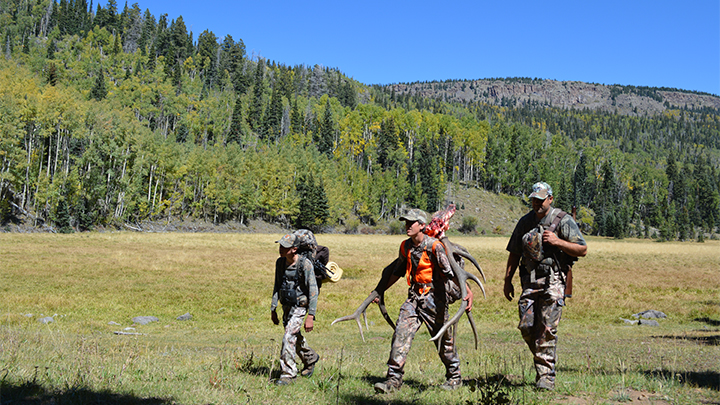
• Watch the Satellites: These bulls often come in like a tornado. They’re trying to beat the boss bull to you, the sexy cow. Be ready, because often they are really nice bulls and well worth expending your tag on. Sometimes you’ll even see a satellite bull with bigger antlers than the herd bull – he’s just not as aggressive or maybe as big-bodied. Satellite bulls also like to sneak up on hunters, so always stay alert for a silent bull using the stealthy approach.
When you’re not hunting during the rut, it’s still possible to call in a bull. Don’t use estrous sounds unless the bull gets very excited. Just use a couple ordinary cow mews and chirps, giving the impression that a happy group of elk is hanging out, just waiting for him to join up. If the bull bugles, answer him with a cow sound. And don’t be surprised if he comes in, even late in the season.
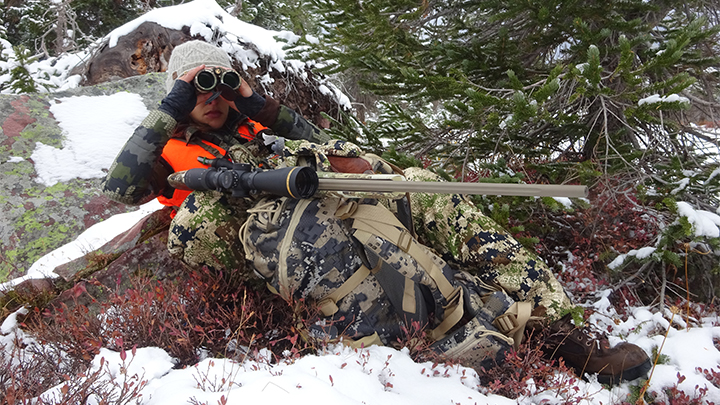
Setup
The right setup is critical to getting a clean shot opportunity. Here are some things you should know:
• Find See Level: The biggest mistake I watch novice elk hunters make—especially those used to hunting whitetails—is using too much cover when setting up. Regardless whether you’re rifle or bowhunting, set up with a wide field of view, or at least several good shooting lanes, in the direction you expect elk to come from. It’s a painful thing to call a bull into your lap, but not be able to take a shot because a bush (which offered such good cover) is in the way. All you need is something behind you to break up your outline.
• Make Travel Easy: If possible, set up where the bull has an easy travel route to your position. Avoid cliffs and ledges, rivers, and big, wide-open areas. If he can easily traverse the route while staying mostly in security cover, he’ll be much more likely to come.
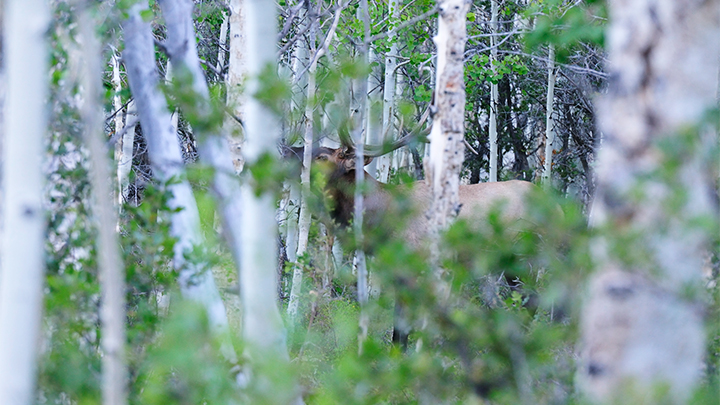
• Create a Corner: As soon as the bull can see your position (where the calls are originating from) he will stop and look for the cow or bull he’s been hearing. If he doesn’t see it, he will turn around and leave. If you’re hunting alone, set up where he has to come around some sort of nearby corner or rise in the terrain or vegetation before he can see your position. That way he’ll be within range when he stops to look, and with luck he’ll present you with a good shot opportunity.
• Keep Your Call Handy: For a bowhunter, this means an inside-the-mouth diaphragm-type call. Be ready to use it, because chances are good that something will go south, and the bull will begin to depart posthaste. If you are ready with your call, you can make a loud cow mew and likely salvage the situation. He’ll stop to look back, giving you a chance to release a careful arrow. The same thing applies to rifle hunting, with the slight difference that your hands are more available. If you prefer, you can use an outside-the-mouth call to stop a spooked bull. Don’t be afraid to whale on the call—the louder and more desperate you sound the more likely he’ll be to stop and look back.
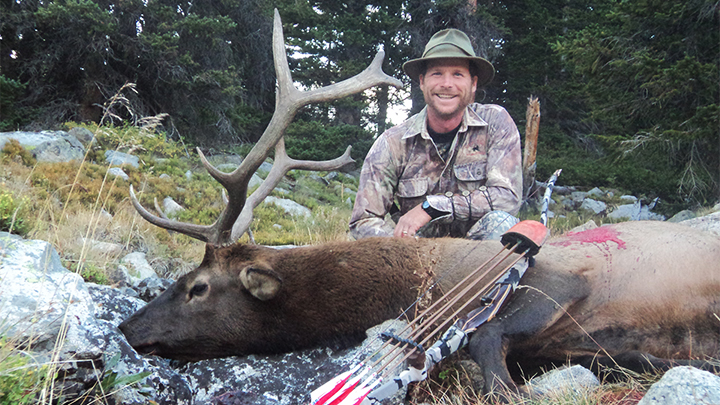
Conclusion
The best way to become good at calling wapiti is to spend time with them. Until you’ve watched a lost cow reunite with the herd, a bull ward off a challenger, or a cow sweet-talk a bull, you can’t really understand the sounds. Meanwhile, you get to hang out in some of the most beautiful country on earth.
Want to read more from Aram von Benedikt? Check out the following articles:
• How to Set Up a Ground Blind for Bowhunting
• Backcountry Mule Deer Hunting: Tools and Tactics
• Tips and Tactics for Hunting the West
• How to Prep for Elk Hunting: Physical Fitness, Mental Toughness, Shooting Skills and Shot Placement
• Hunting African Plains Game: How and Where to Place Your Shot
• Dream Hunt: How to Make an African Safari Come True
• Top 5 Backcountry Hunting Rifles
• Hunting Cartridges: Rising Starts of the New Millennium
• Tips and Tactics for DIY Hunting and Fishing in Hawaii
• Peccary Quest: Where and How to Hunt Javelina
• Tips and Tactics for Hunting Western Cottontails
• How to Convince Your Wife to Let You Buy as Many Guns as You Want
• Backcountry Survival Tips: How to Deal with Disaster
• DIY Backcountry Hunting Tactics and Gear
• How to Be an Ethical Long-Range Hunter
• Tips and Tactics for Hunting Coues Deer
• Essential Stalking and Still-Hunting Skills
• A Beginner's Guide to Traditional Bowhunting
• 6.5 Creedmoor Proven: How Does It Actually Perform on Big Game?
• How Hunting Rifles & Gear Have Evolved Over the Last 50 Years
• How to Sharpen a Knife
• How to Set Up Your Rifle and Scope for Long-Range Dialing
• 7 Common Predator Hunting Mistakes to Avoid
• 6 Tips for Hunting Public-Land Mule Deer
• 10 Tips for Bowhunting Elk
• Tips and Tactics for Bowhunting Mule Deer
• How Do You Build the Ultimate Western Big-Game Rifle?
• 10 Ways to Prep for Your Next Western Big-Game Hunt
• Tips and Tactics for Hunting Canyon-Country Gobblers
• 12 Tips for Shed Hunting the West












